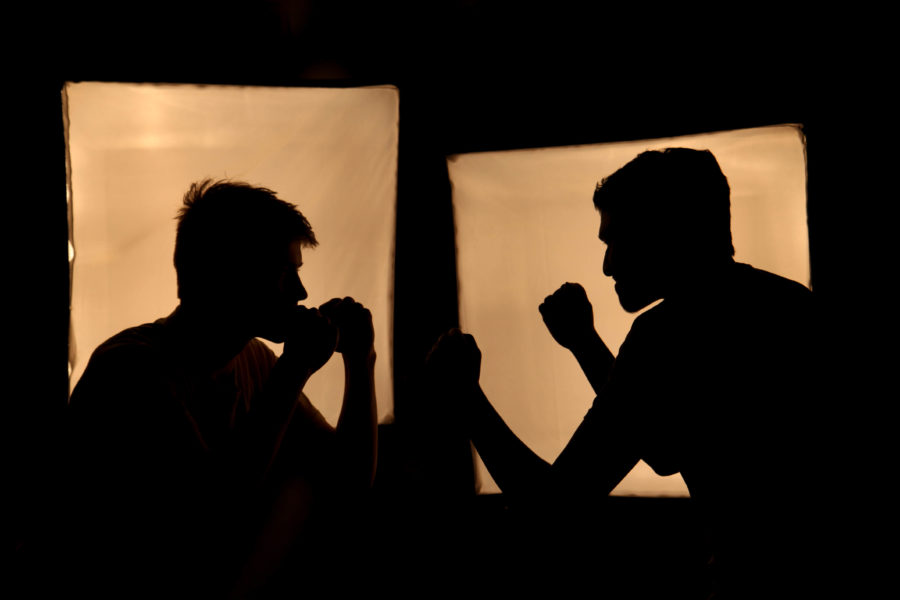Fights in School
Media by Taylor Styer
Two students fight to settle a conflict in school. In years past, it was the norm for students to settle differences and confrontations through acts of physical violence. This, however, has changed in modern times.
The administration in Rockwood takes fighting far too seriously.
“Fighting, as far as inside this building, doesn’t happen very often,” Dr. Greg Mathison, head principal, said.
However, non-physical bullying has become almost a social norm for today’s high school population. It is commonplace for name calling to occur in a group chat, over Snapchat, or any other social media. There is no escaping all of those things. While many argue that you can just turn off your devices, and be rid of the bullying; once you know people are talking about you negatively, the urge to look can be overwhelming.
Many people would tell you that the damage done by the constant connection and the anonymity of social media is much worse than the physical bullying.
Multiple adults who were in their schooling years prior to the generation of instant communication generally claim that fighting was thought of as conflict resolution rather than a heinous offense. Two people had a confrontation; they settled it; they received a minor school punishment, and everyone involved learned a lesson, whether it was an easy one or not.
Today, this situation is much different. Even for the most minor of scuffles, a student is looking at five days out of school suspension — at least at the high school level. The real deep-seated issue is we, as a community, now take fights in school very seriously and punish kids even if they are defending themselves. This mind-frame, in turn, results in a generation of kids lacking conflict resolution skills.
The bullies don’t ever learn that there are people who will retaliate, which to them, is a motivator to continue their behavior. The victims are punished even if they do the logical thing when being attacked: defend themselves. This lands them the same punishment as the instigator of the confrontation.
This shift has lead to a submissive majority who would much rather take the taunting than face the wrath of the overzealous administration.
This brings me full circle to cyber and verbal bullying. The steps that the schools have taken to ensure physical bullying, in a rare occurrence, have worked — there is no doubt in my mind about that. However, these same schools have now made a monster: bullying is now more prominent than ever. With such easy access to instant communication, bullying can happen anywhere.
This monster, in conjunction with the fact we have taught our students that they are not right to defend themselves in confrontation, has led to the increase in bullying. But now, it’s not bumps and bruises that you get, but rather long-term psychological damage and an incredible unpreparedness for the challenges the real world will bring.
Your donation will support the student journalists of Marquette High School. Your contribution will allow us to purchase equipment and cover our annual website hosting costs. You may become a PATRON by making a donation at one of these levels: White/$30, Green/$50, Blue/$100. Patron names will be published in the print newsmagazine, on the website and once per quarter on our social media accounts.

Alex McAteer, senior, is the Opinions Editor for the Marquette Messenger. Outside of journalism, he runs on the Cross Country team as well as throwing...





Terry Murphy • Mar 21, 2017 at 6:38 PM
Great read Alex. Hints to an understanding well beyond your years. 1959-1962 were my high school years and any and all bullying done around that period of time and for many years after were done like you said, in school and after school. Fist fights or just wrestling around were the common behavior for bullying or settling a dispute. Most bullies would only pick on some one deemed a bit too “timid” to fight back for whatever reason. Of course I can only speak of my own experiences and I had Catholic Men (Brothers of Mary) for teachers and to settle some disputes right there on the spot it would not be uncommon at all for them to hit, push, throw, shove, one or more students to the ground. Your article is quite good.
Ethan hill • Mar 21, 2017 at 1:16 PM
Good stuff, I’m a victim. But overall, good stuff
Ethan hill • Mar 21, 2017 at 1:22 PM
@Ethan hill, I agree completely